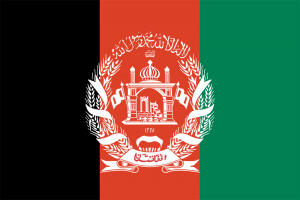Language/Central-pashto/Grammar/Yes/No-Questions
| ◀️ Common Drinks — Previous Lesson | Next Lesson — Wh-Questions ▶️ |
Questions are an essential part of any language, as they help us gain information, clarify doubts, and express ourselves more effectively. In this lesson, you will learn how to form yes/no questions in Central Pashto, a crucial component of the language. You will practice asking and answering questions and understand the difference between statement and question forms.
Yes/No Questions in Central Pashto
Yes/no questions in Central Pashto can be formed by using either rising intonation at the end of a sentence or by adding a question particle -ه to the end of a sentence. The particle -ه is equivalent to the English word "is" or "has."
For example:
| Central Pashto | Pronunciation | English |
|---|---|---|
| ښه دې؟ | “Sah dey?” | Is he/she/it good? |
| چې پروانه نه لرې؟ | “Chey prwana na larey?” | Isn’t it a butterfly? |
| ته جانانه پوهېږي؟ | “Ta janana pohyegi?” | Will you study? |
In the above examples, the rising intonation is used to form a question in the first two sentences, while the question particle -ه is used at the end of the last sentence. Note that in this particle, the letter ه is added to the end of the verb. The verb is also changed to match the subject's gender and number in Central Pashto.
Here are some more examples of yes/no questions in Central Pashto:
- اوس په کار کې دی؟ (Os pa kar ke dey?) - Is he/she at work?
- ته دې کويره يې بوخورئ؟ (Ta dey kaweyrey ye bukhurey?) - Have you eaten bread today?
- که ته زما لاس نه کړېږي؟ (Khe ta zama las na kragey?) - Haven’t you seen my shirt?
As you can see, the verb usually comes at the end of a sentence in Central Pashto. This word order is the opposite of English, where the subject comes before the verb in questions. Another difference is that the verb changes depending on the gender and number of the subject in Central Pashto.
To make yes/no questions negative in Central Pashto, we can add the negative particle نه at the end of the sentence.
For example:
| Central Pashto | Pronunciation | English |
|---|---|---|
| ته تله نه ويناست؟ (Ta tala na wienast?) | Don’t you know her? | |
| ښه دې نه؟ (Sah dey na?) | Isn’t he/she/it good? | |
| که ته دې نه دېد؟ (Khe ta dey na ded?) | Won’t you give him/her/it to me? |
Practice
Now that you know how to form Yes/No questions in Central Pashto let's practice creating some examples.
- Form the following sentences into yes/no questions.
- Remember to change the verb based on gender and number (if applicable)
- Use rising intonation or the question particle -ه to form the questions.
1. زه دې ګل مينه (Za dey gul meyana) - I have a flower.
2. داسې موږ په ګډې پوهېږي (Dasay mwa pa ghadey pohyegi) - We will eat together.
3. ته نوی تلویزیون غوره کو؟ (Ta noye telewizyoon ghora kaw?) - Are you watching the new TV?
4. دې دګroکer ځانه ويي چېرته rې (Dey dakar zanahu weye cherta ra) - The man who is running is coming here.
Answers:
1. دې ګلrې مېنه؟ (Dey gulrey meyana?) - Do you have a flower? 2. موږ په ګډې سره يې شي؟ (Mwa pa ghadey sara ye shey?) - Shall we eat together? 3. ته نوی تلویزیونrې ويي چېرته غوره؟ (Ta noye telewizyoonrey weye cherta ghora?) - Is it the new TV that you are watching? 4. دې دګroکer ځانه ويي چېرته rې (Dey dakar zanahu weye cherta ra?) - Is the man who is running coming here?
Statement vs. Question Forms
As mentioned earlier, the word order in Pashto is different from English. A sentence that is a statement can be changed into a question simply by adding rising intonation or the question particle -ه, but that does not change the sentence's meaning.
In English, a question has an interrogative pronoun, such as "what," "who," or "how," that changes the sentence's meaning. In Central Pashto, wh-questions are formed by using the same structure as yes/no questions except for adding the wh-word at the beginning of the sentence.
For example:
| Central Pashto | Pronunciation | English |
|---|---|---|
| څه اوسوی هستۍ؟ (Tsa osawi yestey?) | What is it? | |
| کله ته به مرغې ساتو؟ (Kala ta bay murghay satwa?) | What did you talk to the hen about yesterday? | |
| څه دې؟ (Tsa dey?) | What is it? |
As you can see, the structure of the sentence is the same as in yes/no questions, except that a wh-word is added to the beginning of the sentence, followed by the verb and the subject.
In conclusion, learning how to form yes/no questions in Central Pashto is essential to communicate effectively in the language. With practice, you will become more confident in asking and answering questions and understanding the sentence structure's nuances between statement and question forms.
| ◀️ Common Drinks — Previous Lesson | Next Lesson — Wh-Questions ▶️ |

